The best art books for summer—as recommended by curators, directors and dealers
As we enter the final weeks of the season, check out these riveting reads, from “the best novel about painting” to a book with no words at all.
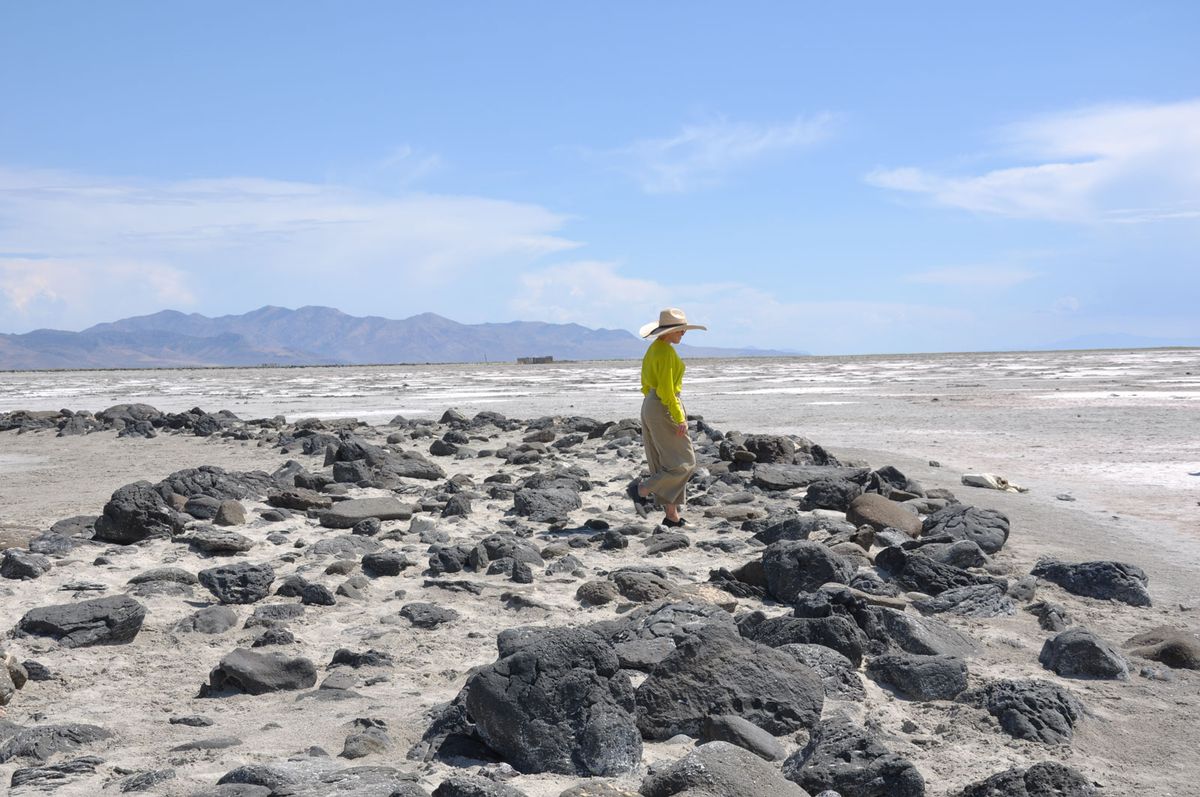
Lisa Le Feuvre at Robert Smithson’s Spiral Jetty (1971)

The Art Newspaper’ s Book Club shines a light on art books in their myriad forms and brings you exclusive extracts, interviews and recommendations from leading art world figures. Sign up to our monthly newsletter

Lisa Le Feuvre, executive director, Holt/Smithson Foundation
Writing in Space, 1973-2019 (2020) by Lorraine O’Grady
What Artists Wear (2021) by Charlie Porter
“The best summer reading needs to be portable, filled with passages that are irresistible to read out loud to fellow hot weather lounging companions, and books you know will not disappoint. Travelling to do nothing with a bad book by your side is a sure route to teeth-gnashing frustration. I have two books on my table ready to travel with me as soon as I set about summer horizontality. Both Lorraine O’Grady and Charlie Porter are wonderful and inspiring writers. The collection of O’Grady’s erudite and charged writings spans 1973 to 2019; each entry contests and reimagines structures of power. Porter takes a journey through the often-unspoken language of clothes, charting and observing their use as armour and invention.”
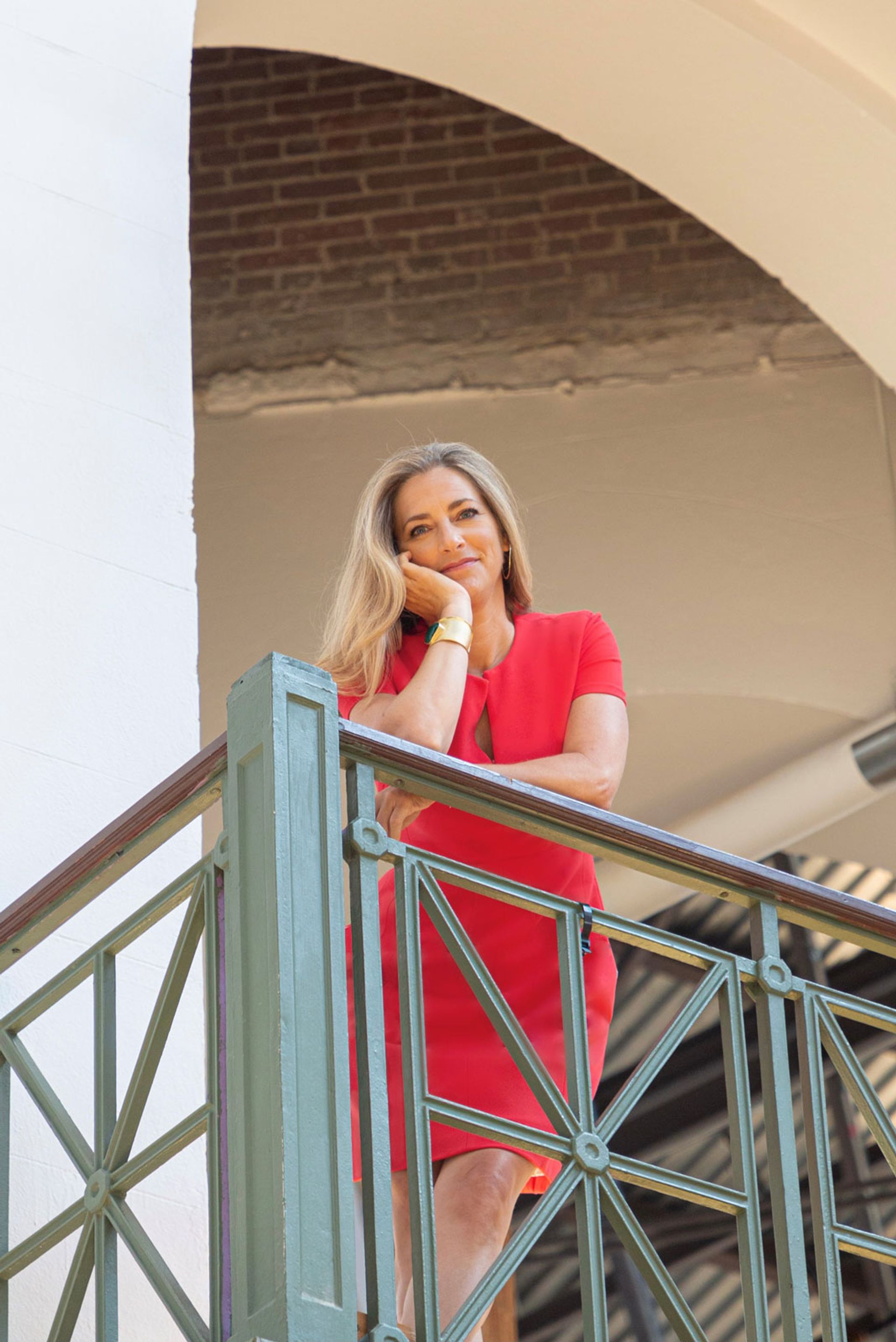
Rachel Goslins
Rachel Goslins, director, Smithsonian’s Arts and Industries Building
The Tsar of Love and Techno (2015) by Anthony Marra
“ The Tsar of Love and Techno is a resonant, multi-faceted meditation on the gravitational pull of art in the constellation of human history, memory and resilience. A series of interconnected stories set in pre- and post-war Russia, we are introduced to a tapestry of characters whose lives surge and recede and connect through generations, often in unexpected ways. A 1930s Soviet censor tasked with erasing people from historical photographs, a disgraced ballerina staging Swan Lake in a labour camp, a curator who opens a museum of regional art in his run-down apartment in Grozny, an unremarkable 19thcentury oil painting that becomes an obsession and a metaphor for the unreliability of history. Darkly funny, lyrical, poignant and surprising, what emerges is a winding thread of how art both saves and betrays us, how we use it to both wound and heal.”
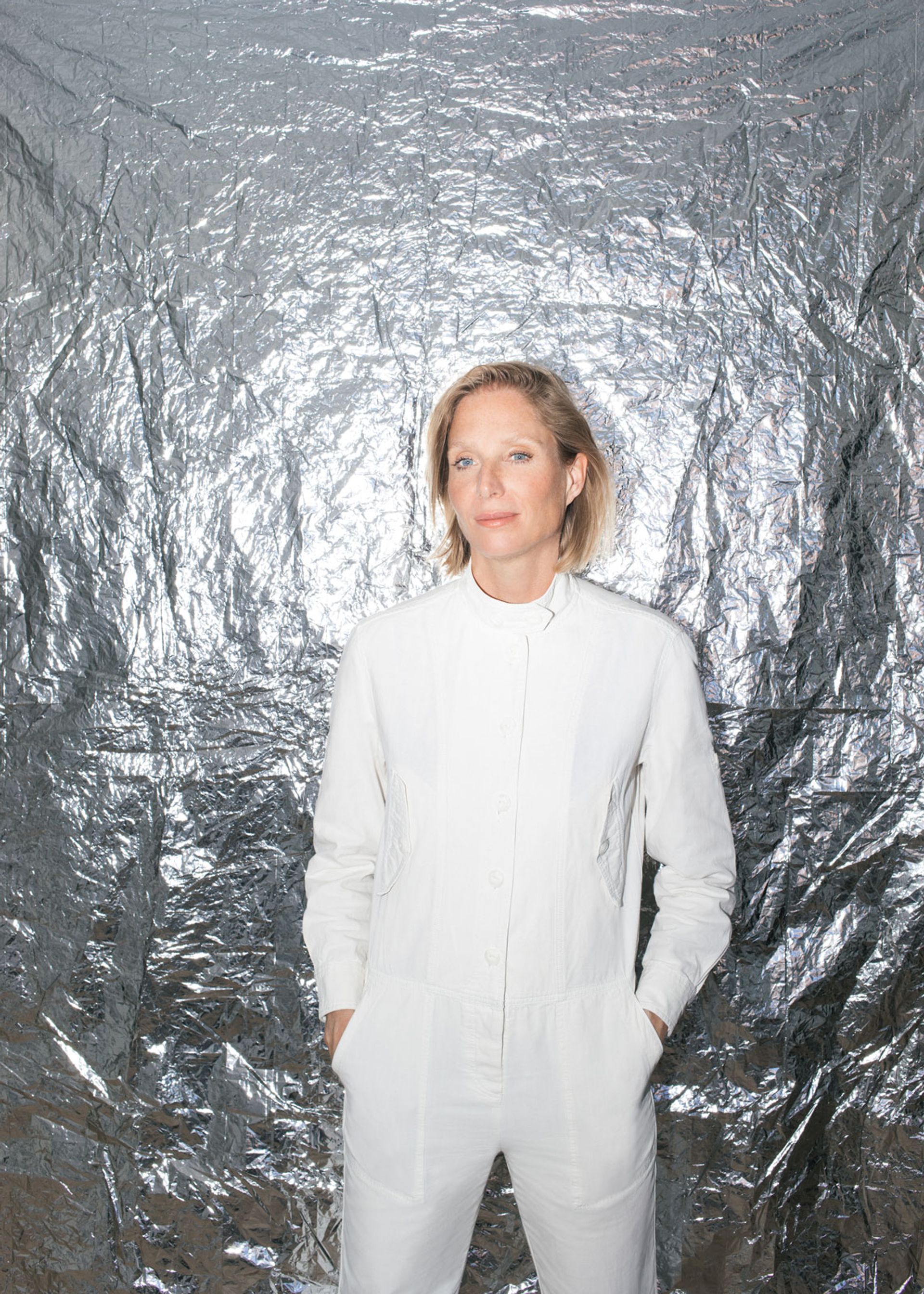
Bettina Kames © Robert Fischer
Bettina Kames, director, Light Art Space
Atlas of Anomalous AI (2020) by Ben Vickers
“With art you can tell stories, change perspectives and shed light on certain topics that would otherwise have remained hidden. Atlas of Anomalous AI by Ben Vickers presents a hyperdimensional view of the world, through a broad range of perspectives that explore the question of what AI (artificial intelligence) has been and what it is becoming. Key texts on modelling, prediction and automation are brought together with stories of science fiction, dreams and human knowledge, set among visionary and surreal images, seen in the chapter titled Art in the Age of Machine Intelligence. You sink into this book and completely lose your surroundings. An ideal companion for a summer holiday or simply a relaxing evening on the balcony.”
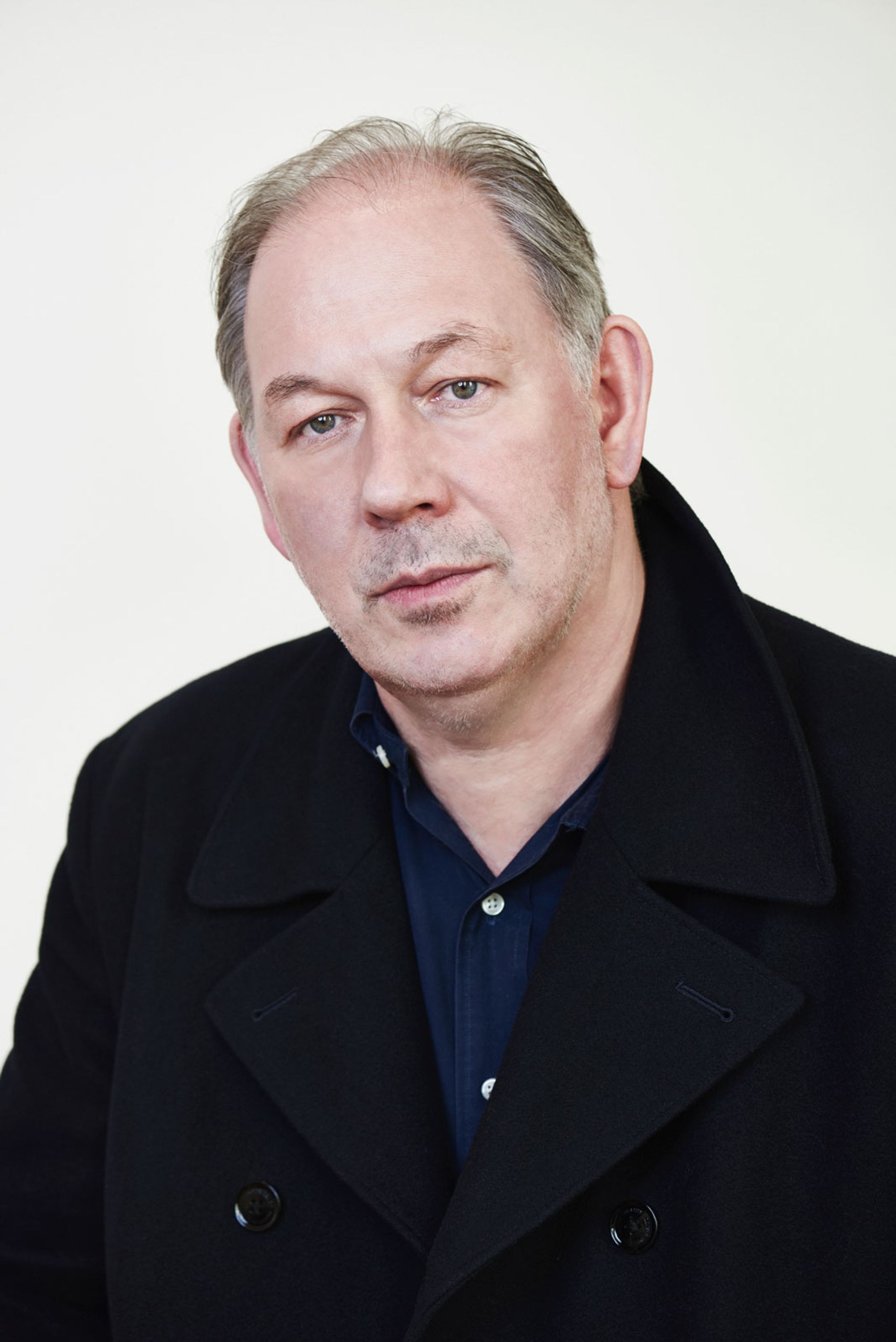
Michael Benson © Philip Sinden
Michael Benson, co-founder of Photo London
A Painter to the King (2018) by Amy Sackville
“In 1622 Philip IV of Spain issued a royal command that Diego Velázquez should leave his native Seville and attend the royal court in Madrid. Initially hesitant, Velázquez becomes—over his years as the King’s favourite both—an observer of the decadence of the court, a chronicler of its machinations and a source of fascination for the king who would often stand in silent wonder in Velázquez’s studio watching his likeness take shape on the canvas. Every line of Sackville’s brilliantly inventive prose demands attention. This is simply the best novel about painting I have ever read.”
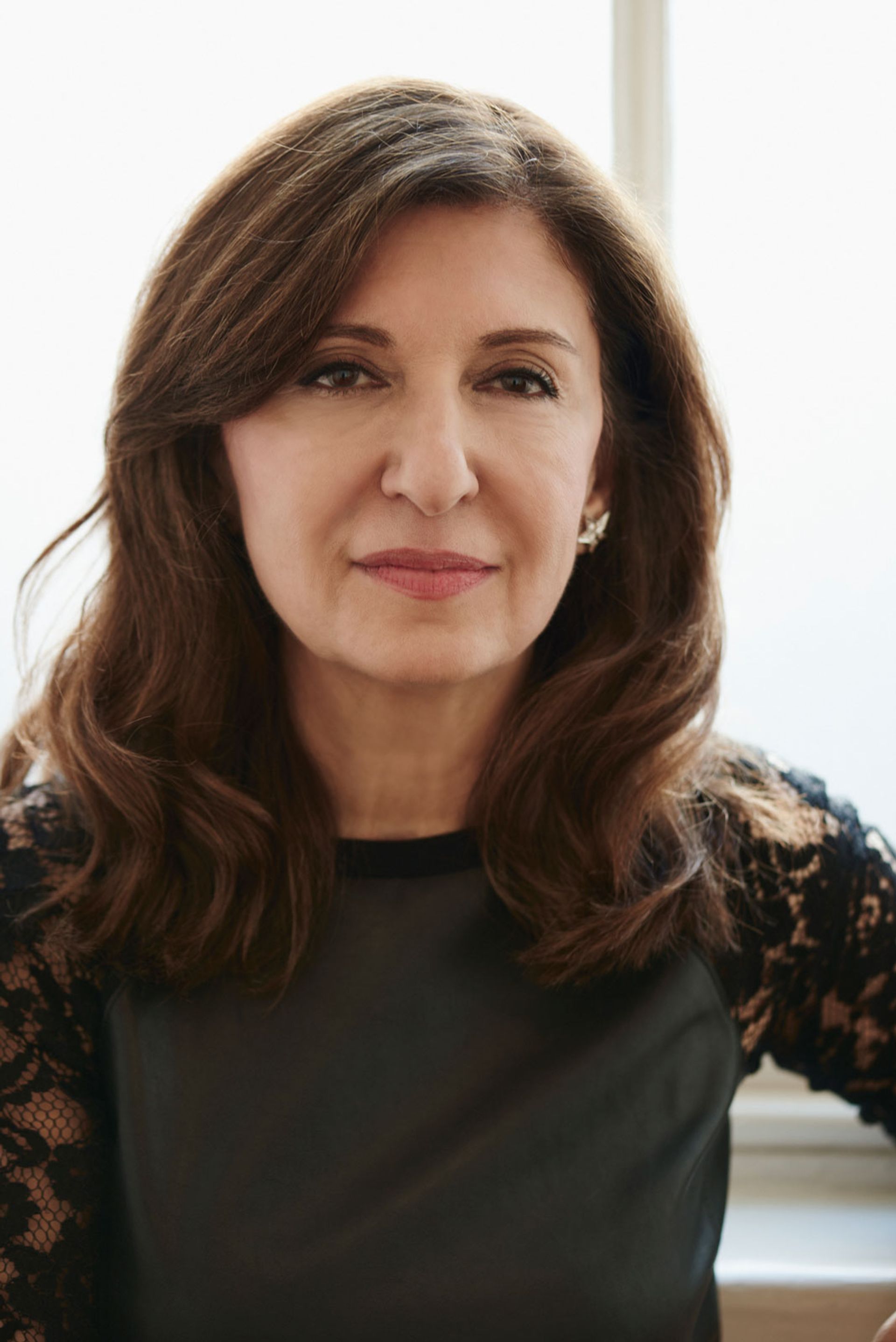
Fariba Farshad © Philip Sinden
Fariba Farshad, co-founder of Photo London
Killing Commendatore (2017) by Haruki Murakami
“Murakami’s narrator is a painter of portraits of no great depth. His wife’s decision to divorce him causes him to leave Tokyo for the mountain home of a famous artist, Tomohiko Amada. When he discovers a previously unseen painting in the attic, he unintentionally opens a circle of mysterious circumstances whose closing requires the usual sequence of playful, supernatural and, frankly, weird events that are Murakami’s stock in trade. The length of the novel and Murakami’s exuberance, which ranges from Japanese myth to F. Scott Fitzgerald, make this a perfect book for a long summer read.”

Susie Biller
Susie Biller, assistant director, Kettle’s Yard
The Marduk Prophecy (2020) by Cedar Lewisohn
“The book I will be taking with me up a hill in Wales this summer is The Marduk Prophecy . It’s essentially an opportunity to have a work of art in one’s hands; it’s an abstract comic book of handmade woodcuts and lino prints. The images are at once familiar and unfamiliar, I’m not always sure what I’m looking at, but I want to carry on looking; there are references to objects Cedar Lewisohn has drawn in museum collections alongside views of Lewisham. As Lewisohn says it’s like ‘time travel through art works’. By being released from words you can take time to look properly. You can ‘read’ it over and over and see something new every time.”

Pilar Corrias © Charlie Gray
Pilar Corias, dealer
Flights (2017) by Olga Tokarczuk
“ Flights interweaves reflections on travel with an in-depth exploration of the human body, broaching life, death, motion, and migration. As a person who travels a lot, I found it particularly interesting during lockdown. Being stuck at home and not being able to travel, this book brought back many moments and experiences I lived during times I could travel the world.”

Rosie Cooper
Rosie Cooper, head of exhibitions, De La Warr Pavilion
The Gentrification of the Mind: Witness to a Lost Imagination (2012) by Sarah Schulman
“Sarah Schulman’s brilliant book is about the Aids crisis in America and the resulting, heart-breaking loss of difference and complexity. Schulman deftly connects the devastation she witnessed to the homogenous gentrification of New York City, the slow erosion of collective action in society and art, and art’s relentless, depressing capitulation to the market. The book is personal, readable and angry: a vital and extremely timely reminder to protect the wild, rebellious imagination, to keep going with the will to change that catastrophe can provoke, and to fight to keep the things society needs to survive—protest, creativity and difference.”

Tamsin Dillon
Tamsin Dillon, founder and director, Art in Public; curator
Performative Monuments: The Rematerialisation of Public Art (2014) by Mechtild Widrich
Afterglow: A Dog Memoir (2017) by Eileen Myles
“I’m always looking for reading material that can help me unravel the complexities of art presented or performed in, and for, public spaces. This book was recently recommended to me during a conversation I was having with someone about the value of monuments through history; permanence vs ephemerality in contemporary art practice; the difference between a practice that could be defined as ‘public art’ compared with any other kind of art practice; and why that distinction continues to be made. Monuments continue to be part of that discussion and with this book the author is examining what she sees as a shift from ‘the monument as authoritarian colossus to harnessing its concrete social force’ by looking at key performance practices such as Valie Export and Marina Abramović.
Another book I’m going to delve into is Afterglow by the poet Eileen Myles, a portrait of a dog they adopted as a puppy from the street and who became central to their life and their art.”
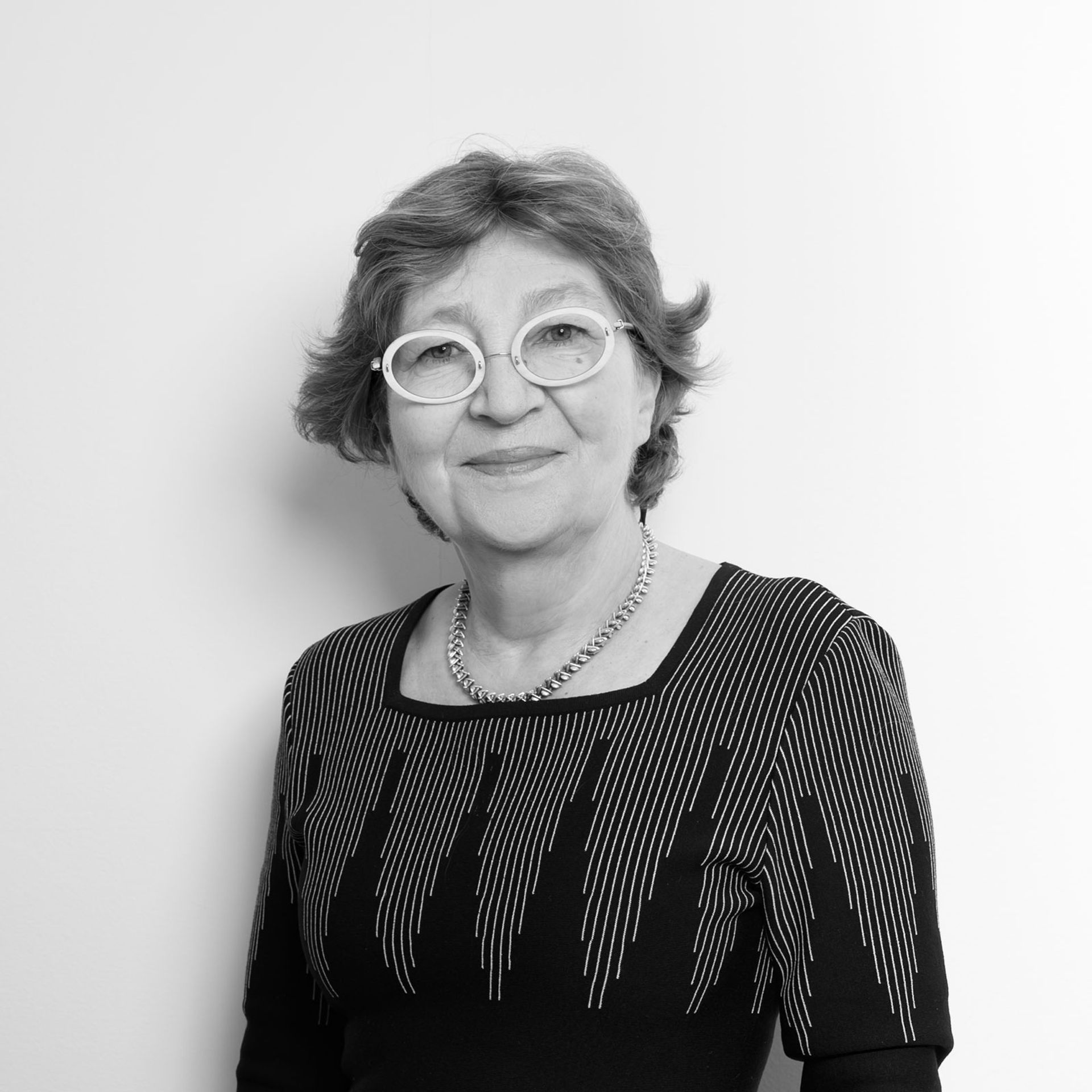
Caroline Bourgeois Courtesy of Pinault Collection; Photo: Irene de Rosen
Caroline Bourgeois, chief curator, Pinault Collection
La Solitude Caravage (2020) by Yannick Haenel
David Hammons: Bliz-aard Ball Sale (2017) by Elena Filipovic
“This French-language novel starts with the experience of a teenager discovering a black and white picture of Caravaggio’s Judith and Holofernes in a book borrowed from the school library. He falls in love with the painting which will in a way change his life, as he later goes on to discover all of Caravaggio’s works. This story, full of suspense, is both a self-portrait of the author and a biography of the artist.
Bliz-aard Ball Sale has as its starting point the US artist David Hammons’ famous performance when he sold snow balls in the street of Harlem in 1983. From that point, Elena Filipovic begins researching his life and work, giving us one of the more comprehensive studies—possibly the only one—on this little known artist. It also reads like a novel.”
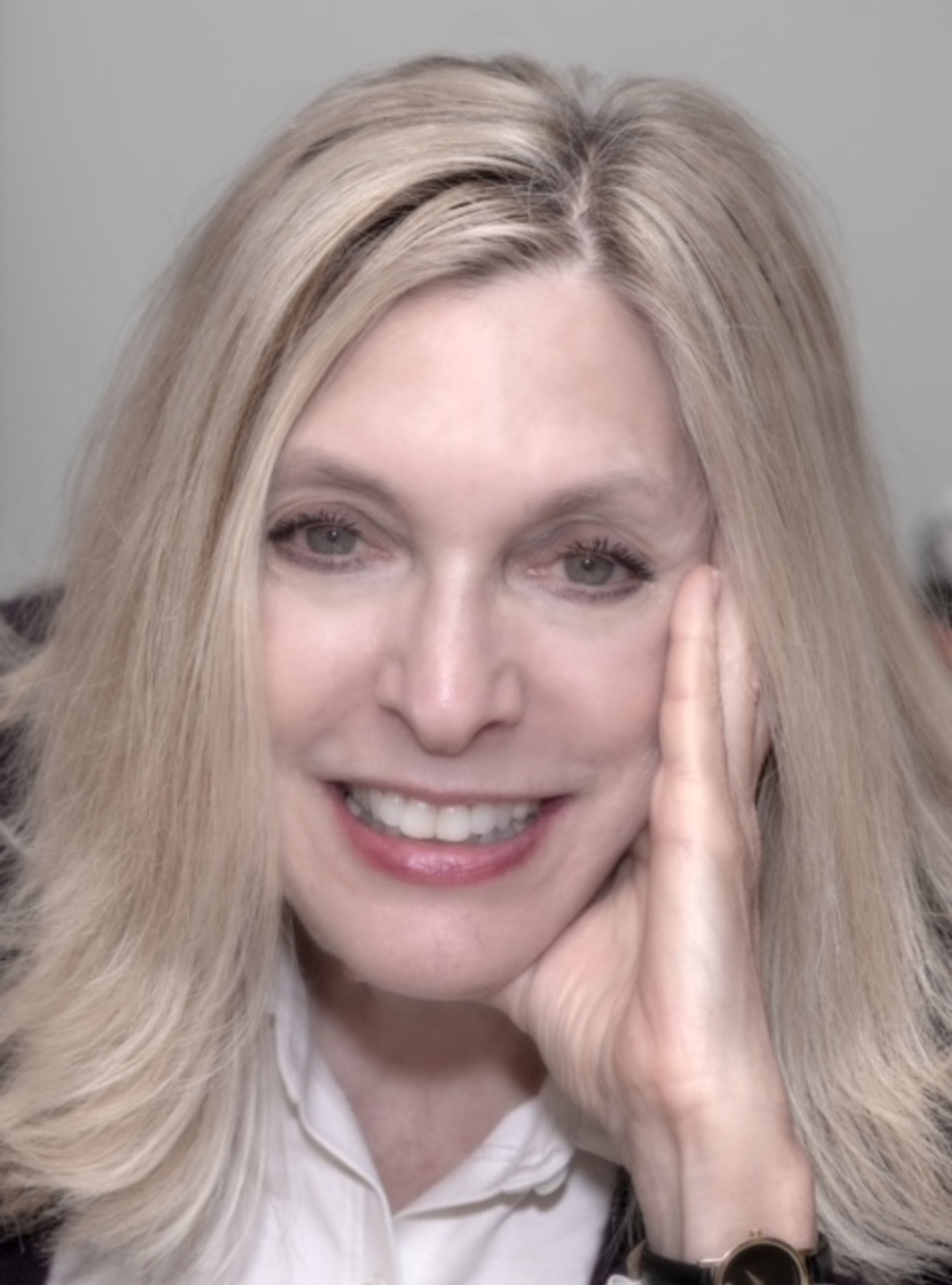
Linda Komaroff
Linda Komaroff, curator of Islamic Art, Los Angeles County Museum of Art
Epic Iran, 5000 Years of Culture (2021) by John Curtis, Ina Sarikhani Sandmann and Tim Stanley
“An easy choice. It is very well written, has great images, and is, for me, a different approach to looking at familiar works of art.”
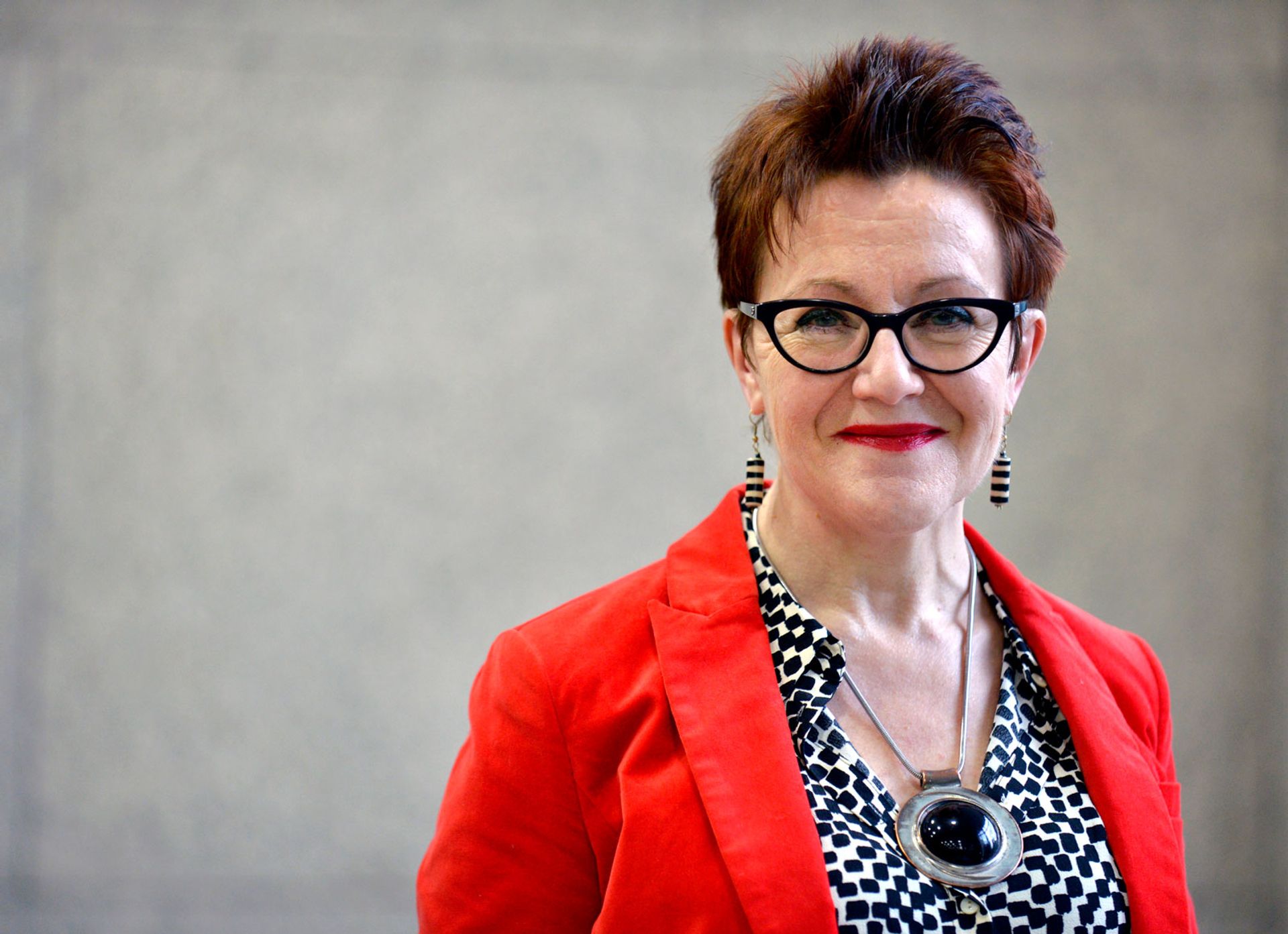
Rosie Goldsmith
Rosie Goldsmith, director, European Literature Network; editor-in-chief, The Riveter magazine
Painting Time (2021) by Maylis de Kerangal
“ Painting Time is the fifth novel by one of France’s most gifted and lauded writers. Whether she’s writing about heart surgery or art, de Kerangal’s research is so thorough and her insight so profound that you believe she must be a surgeon or painter. In this superb novel of growing up, friendship and creativity, the protagonist Paula Karst learns the decorative art of trompe l’oeil. We follow her as she works on film sets for Cinécitta in Rome and on replicas of the Lascaux caves, ‘where art began’. An intoxicating read and itself a masterpiece.”
Sign up to our monthly Book Club newsletter and follow us on social media using #TANbookclub
- Icon Link Plus Icon
Essential Books: 7 Enduring Works of Art Criticism
By The ARTnews Recommends Editors
The ARTnews Recommends Editors

If you purchase an independently reviewed product or service through a link on our website, ARTnews.com may receive an affiliate commission.
1. Lowery Stokes Sims, Challenge of the Modern: African-American Artists 1925–1945 African-American artists are getting more attention these days than they ever have before, their visibility standing in sharp contrast to the dearth of recognition Black artists faced during the 20th century. Started in Europe, modern art was a white man’s club, though in America, surprisingly, a small though significant coterie of artists of color (including Romare Bearden, Norman Lewis, and Jacob Lawrence) emerged to put their spin on the movement. Their efforts are featured in Lowery Stokes Sims’s Challenge of the Modern: African-American Artists 1925–1945 , which accompanied a 2003 exhibition of the same name at the Studio Museum in Harlem. The period it covers represents the zenith of Jim Crow and the concomitant Great Migration of African-Americans from the South to big northern cities, and as Simms notes, this transformational shift from rural life to urban existence shaped a uniquely African-American view of modernity pitched between oppression and liberating potential. Purchase: Challenge of the Modern $85.00 (used) on Abebooks
2. Harold Rosenberg, The Anxious Object: Art Today and Its Audience To the victors go the spoils, and for a triumphant United States after World War II, that included claiming for New York City the title of world’s art capital. In the early postwar era, Abstract Expressionism exploded onto the international stage as the ne plus ultra of innovations marking modernism’s arrival (indeed, it would take nearly a decade before artists such as Robert Rauschenberg, Jasper Johns, and Andy Warhol upended AbEx’s dominance). However, by the time critic Harold Rosenberg published The Anxious Object in the mid-1960s, worries about how to sustain the avant-garde commitment (which Rosenberg described as “the tradition of the new”) to revolutionary progress had settled over the art world. The question “Where does it all lead?” prompted Rosenberg’s book, though he didn’t provide an answer. Instead, the book reveals his struggles with the beginnings of modernism’s retreat. Often obscure and self-contradictory, Rosenberg’s tome nonetheless became a classic of midcentury criticism. Purchase: The Anxious Object $25.66 (used) on Amazon
3. Claire Bishop, Artificial Hells: Participatory Art and the Politics of Spectatorship Throughout its existence, performance art has tied elements of theater and spectacle to ideological, or at least socially subversive, ends. That is the thesis, anyway, of Claire Bishop’s Artificial Hells: Participatory Art and the Politics of Spectatorship , which provides a critical exegesis of the genre and its century-long history. The book opens with the author’s 2006 Artforum article thrashing out the aesthetics and anti-aesthetics of participatory art, then dives into a chronicle touching on Constructivist theater; the public outrages of Dada and Futurism; Cold-War Happenings in Eastern Europe and South America mounted against repressive regimes; the Situationist International involvement with the May 1968 uprising in France; and the work of London’s Artist Placement Group, founded in 1965 to embed artists within government agencies and businesses as way of finding new avenues for art. Artificial Hells concludes with contemporary examples of participatory art, providing a definitive account of this complex and malleable practice. Purchase: Artificial Hells $22.53 (new) on Amazon
4. Linda Nochlin, Realism (Style and Civilization) The term realism is usually associated with naturalistically rendered imagery. But according to Linda Nochlin’s seminal tome, it had a profoundly different meaning during the 19th century, a period of social and political upheaval wrought by the Industrial Revolution. This was especially true in France, where art had been governed by the Académie des Beaux-Arts since the 17th century. Realism represented a radical break with academic standards enforced through an annual public salon that ranked subjects by importance, placing larger-than-life allegorical or historical narratives on top in a hierarchy that persisted even as different styles (Rococo, Neoclassicism, Romanticism) found official favor. In contrast, Realism introduced everyday scenes—once reserved for the lowly “genre” category—on a scale commensurate with celebrations of mythology and monarchy. Although Nochlin focuses on French painters who led the charge—Courbet, Manet, Degas—she also widens her survey to Germany, Italy, and other countries where Realism took root and changed art history. Purchase: Realism $81.68 (new) on Amazon
5. Barbara Rose, American Art Since 1900 Noted art historian and curator Barbara Rose was a major proponent of the artistic developments roiling 1960s and ’70s New York, a period when Pop Art, Minimalism, and Conceptual Art supplanted Abstract Expressionism, which had enjoyed an artistic monopoly during the early postwar era, as the mainstays of contemporary art. Published in 1967 in the thick of these developments, Rose’s book offered a critical take on 20th-century American art, examining art movements within the social contexts of their day. Starting with the Ashcan School (which practiced a gritty realism focused on the fervid pace of urban, working-class life), Rose plotted out a decades-long quest by American artists for independence from European modernism—which they did, in effect, by hijacking it. Though pitched to broad readership, Rose’s prose could be difficult at times, but that didn’t prevent the book from becoming a go-to text for college students and other nonspecialist readers. Purchase: American Art Since 1900 $6.40 (used) on Amazon
6. Lucy Lippard, From the Center: Feminist Essays on Women’s Art Critic Lucy Lippard was best known in the late 1960s and early ’70s for promoting Conceptual Art, but this collection of essays also put her in the forefront of feminist art. Its 1976 publication came soon after the emergence of feminism as a widespread phenomenon, making Lippard’s book a retelling, in part, of how she became woke to its tenets. The first half of the book consists of Lippard’s catalog essays and articles for Artforum , Art in America , and Ms. magazine; the second half focuses on women artists such as Adrian Piper, Nancy Graves, and Marjorie Strider. Lippard considers such questions as why women artists tend to emerge in late career. Intriguingly, she puts partial blame on rampant sexism in art schools, where condescension to female students can promote low self-esteem. In From the Center , Lippard details her “process of consciousness” and dawning awareness of the pervasive misogynism of the art world. Purchase: From the Center , from $96.05 (new) on Abebooks
7. Darby English, How to See a Work of Art in Total Darkness As successful as they have been of late, African-American artists remain burdened by the expectation that race is the defining feature of their work. This not-coincidentally white view is the thesis of Darby English’s book, in which he focuses on five artists of color—Kara Walker, Fred Wilson, Isaac Julien, Glenn Ligon, and William Pope.L. English contends that seeing their work through the prism of race robs it of agency and relegates it to a reductive reading that English metaphorically dubs “total darkness.” For example, he compares Walker’s silhouetted murals, which appropriate a proto-photographic technique of 19th-century portraiture, to the coeval practices of landscape painting, arguing that Walker’s scenes of antebellum plantation life employ a similarly expansive approach to composition. English’s basic point is that his subjects aren’t simply black, but artists operating within an art-historical framework, and that seeing their work in that light is crucial to understanding it. Purchase: How to See a Work of Art in Total Darkness $40.45 (new) on Amazon

This Hyatt Heir’s Massive L.A. Estate Has Nearly 20 Fireplaces. Now It Can Be Yours for $195 Million.

Former Abercrombie & Fitch Co. CEO Pleads Not Guilty to Sex Trafficking, Interstate Prostitution Charges

Venom 3 post-credit scenes tease potential connections to Spider-Man 4

Fernando Valenzuela’s Memory Lives on in This World Series

The Best Yoga Mats for Any Practice, According to Instructors
ARTnews is a part of Penske Media Corporation. © 2024 Art Media, LLC. All Rights Reserved.
- Current Issue
- Current issue
- Apollo Awards 2023
- 40 Under 40
- 4 Things To See
- Architecture
- Apollo Events
- Photography
- Competitions

How to make a new museum in Nigeria
The plans for the Museum of West African Art in Nigeria point to a new path for creating an institution from scratch and more imaginative ways of dealing with the colonial past

Making lunch for Lucian Freud
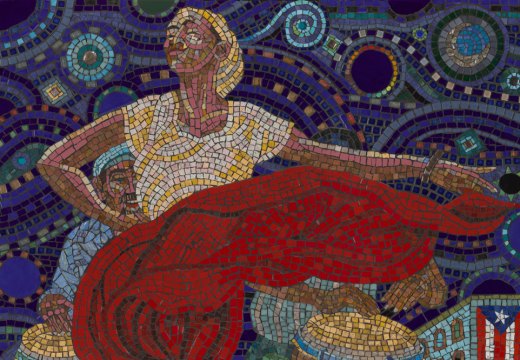
Manny Vega makes a splash in New York
How will paris cope without the pompidou centre for five years, the young collectors on the hunt for old masters, the cosmic art of liliane lijn, were the impressionists really so shocking.
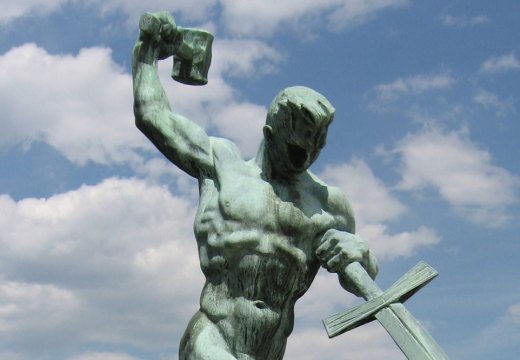
Four things to see: Peace
To coincide with United Nations Day, we look at four artworks and objects designed to promote harmony or tranquillity
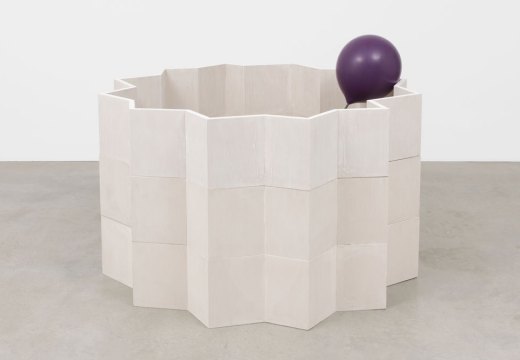
Alison Wilding keeps up a careful balancing act
A stimulating show at Alison Jacques perfectly captures the sculptor’s ability to combine familiar materials in unexpected ways

The bohemians who trained a generation of British artists
Cedric Morris and Arthur Lett-Haines turned their backs on the London art world to create an art school with an outsize legacy
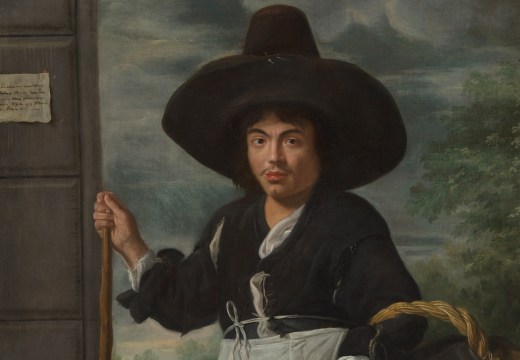
Acquisitions of the month: September 2024
A 17th-century portrait of a bookseller from Lombardy and a breviary from the library of Charles V are among this month’s highlights
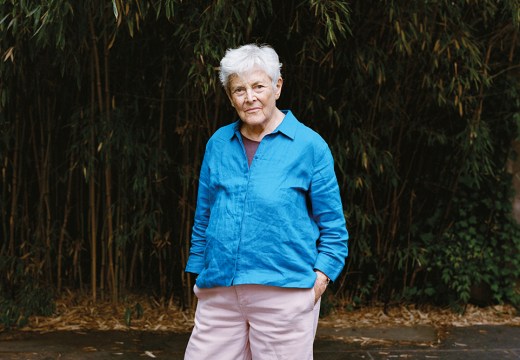
The artist has pursued her interest in light, motion and myth across drawing, sculpture and performance for six decades, but it’s her openness to new ideas that really defines her work
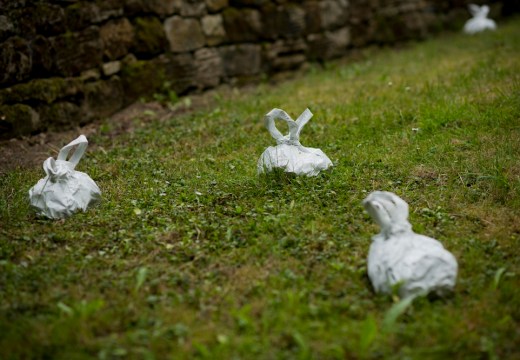
When does rubbish become art?
A feud in Fife involving a single-minded outsider artist and his unhappy neighbour gives Apollo’s roving correspondent cause to reflect
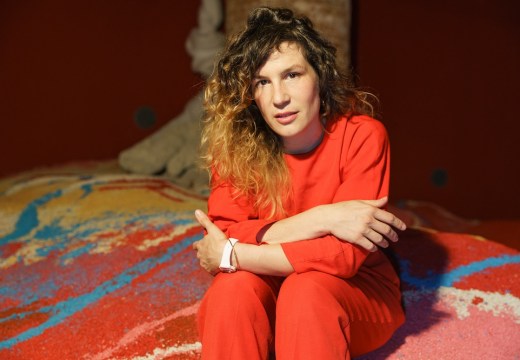
In the studio with… Pauline Curnier Jardin
When working in her suntrap of a studio in Rome, the artist enjoys people-watching, listening to jazz and admiring an antique manhole cover made of travertine
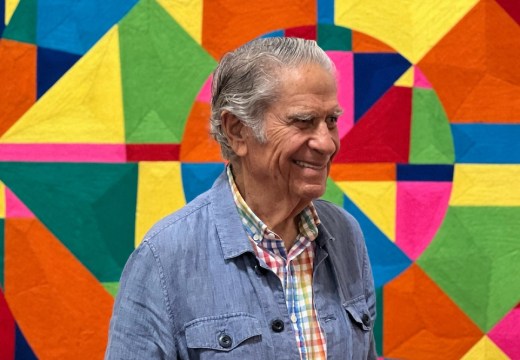
In the studio with… Eduardo Terrazas
The Mexican artist, known for his woven works that borrow from folk-art traditions, listens to Bach and Rosalía while working in his studio in Colonia Roma, Mexico City

October 2024
An interview with Liliane Lijn
The dealer who launched Picasso
The marvels of Mughal painting
Impressionism and its discontents
Plus: The many faces of Mary Magdalene , memory and modernity at the new-look Warburg Institute , how Paris will cope without the Pompidou , the richness of Arte Povera , the joy of arty plates , and what a dearth of young collectors might mean for the market ; plus reviews of Mark Bradford in Berlin , what Scotland thought of the Cold War , and how printmaking made an impression
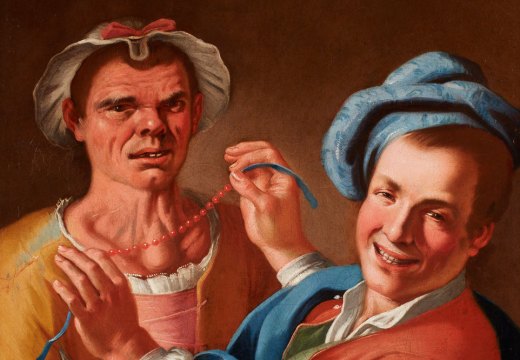
Four things to see: Dress to express
People have always used clothing to express their individuality and sometimes to rebel against societal norms – as these four artworks and photographs show

The ghostly worlds of Goya and Paula Rego
The artists’ eerie prints have much in common, but this pairing at the Holburne Museum is something of a missed opportunity
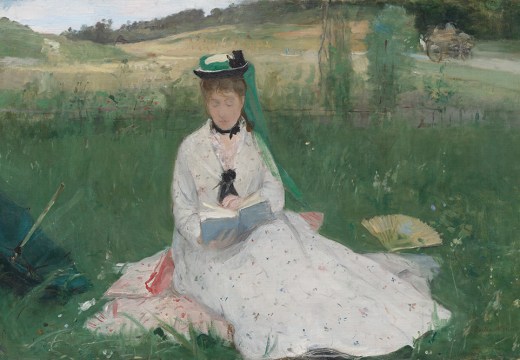
It suits us to think of the movement as unpopular, but the passing of time makes it harder to see why the first Impressionist Exhibition of 1874 made such a stir
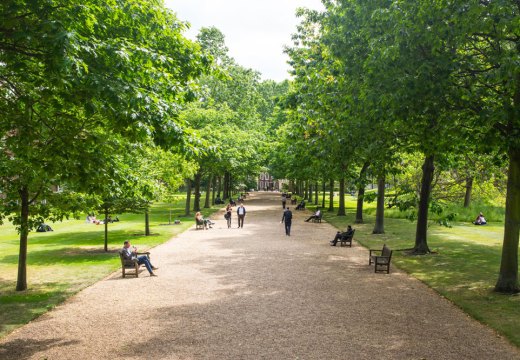
‘One of the most attractive green spaces in central London’
Gray’s Inn Gardens forms part of a vista that has been threatened by developers more than once, but still provides a much-needed haven
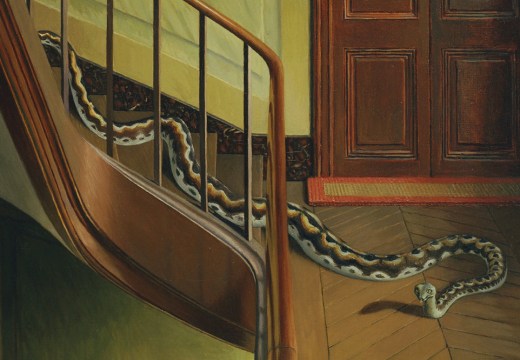
The slippery Surrealism of Pierre Roy
The French artist was largely ignored by his peers, but his uncanny painting of a snake is a masterpiece
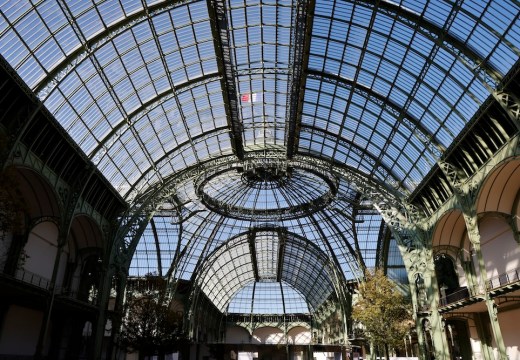
Art Basel Paris gets a second chance to make a first impression
The much-anticipated fair returns to Paris for ‘a second inaugural edition’ with a whole new section and a greater emphasis on public programming

Paula Modersohn-Becker’s quest to become her own person
The German painter died tragically young, but in the course of her short life she became the artist she always wanted to be
Your weekly update of art news stories from around the world
Frieze’s parent company considering selling off art fairs and magazine, christine macel steps down as director of the musée des arts décoratifs, directors of major uk museums call for attacks on artworks to stop, plans revived for centre pompidou satellite in new jersey, climate activists throw soup at van gogh paintings after jailing of fellow protestors.
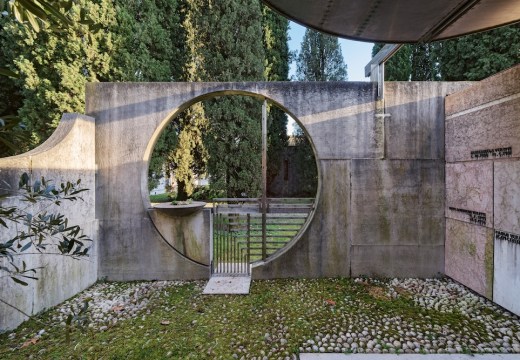
The cult buildings of Carlo Scarpa
The Italian modernist who was at his most creative working in historic settings left behind an intensely individual legacy
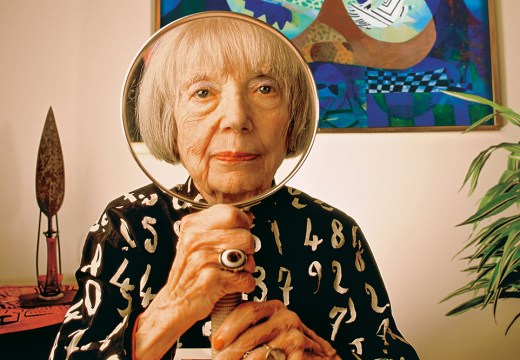
The unconventional wisdom of Eileen Agar
The British Surrealist’s colourful account of a long and eventful career is back in print, and her deep commitment to her work couldn’t be clearer

Bringing Pompeii back to life
Recent conservation efforts have led to new discoveries of stunning interiors and wall paintings that also tell us more about everyday life in the city
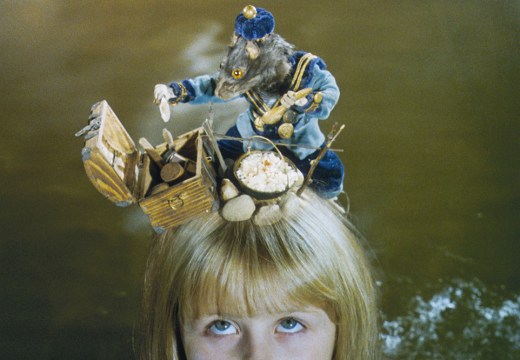
The surreal films of Jan Švankmajer
When it comes to conjuring the uncanny atmosphere and impossible logic of dreams, the Czech film-maker has few equals
Apollo's wandering eye on the art world, taking a rakish perspective on art and museum stories
Emmanuel macron pleads for emily to stay in paris, an eye-opening look at girl with a pearl earring, winter is coming, so why not bid for your very own piece of game of thrones, justice for moo deng, the internet’s favourite hippo.

After the End of the World: Pictures from Panafrica
Documentary photographs from apartheid-era South Africa sit alongside pictures inspired by Candomblé traditions in this wide-ranging show in Chicago

Katharina Sieverding
Political art, text-based works and flamboyant self-portraits by the German photographer go on show in Düsseldorf
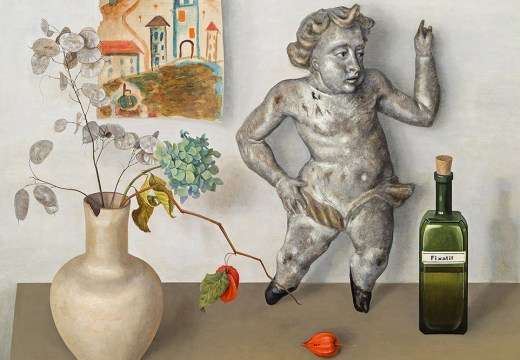
Rudolf Wacker: Magic and Abysses of Reality
The horrors of the First World War and its troubled aftermath loom large in the Austrian artist’s inventive, disconcerting paintings
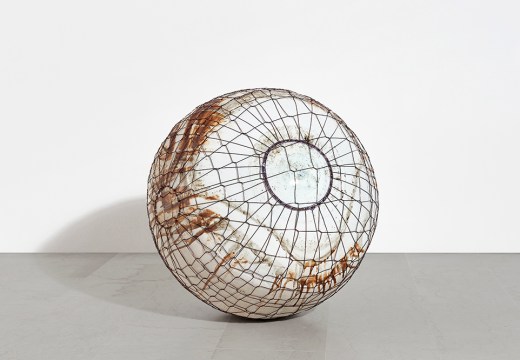
Ana Lupas: Intimate Space – Open Gaze
The most extensive survey to date of the artist’s career touches on Romanian craft traditions as well as the country’s turbulent history
Sign up for Apollo newsletters and special offers
Sign up now to receive free Apollo newsletters direct to your inbox
- About Apollo
- Advertise with us
- Terms and Conditions
- Share full article
Advertisement
Supported by
Best Art Books of 2021
The art critics of The Times select their favorites from this year’s crop of art books.

By Holland Cotter Roberta Smith Jason Farago and Siddhartha Mitter
In a lockdown year, with travel reduced, there was no movable feast quite like an art book. Art is made by all sorts of people, everywhere, all the time, along many different paths, some of which are illuminated by these intriguing publications chosen by our critics.
Holland Cotter’s Favorites
‘ray johnson c/o’.
The maverick American artist Ray Johnson (1927-1995), who managed to be nowhere and everywhere in the art world through his invention of Mail Art, was lucky in his longtime friend William S. Wilson, to whom, over 60 years, he gave thousands of letters, collages, drawings and clippings. Wilson saved every last scrap, and a jampacked sampling of them makes up this gold mine of a book, edited and curated by Caitlin Haskell with Jordan Carter. Funny, biting, morbid, it’s a page-turner for sure, and accompanies a show at the Art Institute of Chicago through March 22). ( Art Institute of Chicago, distributed by Yale University Press )
‘The Dirty South: Contemporary Art, Material Culture, and the Sonic Impulse’
Edited by the curator Valerie Cassel Oliver, this catalog for one of the outstanding exhibitions of the season — originating at the Virginia Museum of Fine Arts, it’s now in Houston — proposes that the culture of the African American South, as defined by music and vernacular art, is the bedrock of American culture itself, with a strong influence on new art today. The book vividly illustrates and deepens the show’s powerful argument. ( Virginia Museum of Fine Arts, distributed by Duke University Press )
‘Yannis Tsarouchis: Dancing in Real Life’
This book lovingly excavates the career of a Greek modernist painter who designed sets for Maria Callas and kept a Greek Classical figurative tradition alive in paintings of homoerotic nudes. Tsarouchis (1910-1989) was both too radical and too conservative for the art world of his time and fell into oblivion outside of Greece. Edited by Niki Gripari and Adam Szymczyk (and including a selection of the artist’s writings), this tender tribute brings him back. ( Sternberg Press )
‘Titian: Love, Desire, Death’
The London exhibition by this name reunited six major mythological paintings that Titian produced for the Spanish court. One of them, “The Rape of Europa,” belongs to the Isabella Stewart Gardner Museum in Boston, where the show , now called“Titian: Women, Myth & Power,” is making its final stop (through Jan. 2). A slender Gardner-issued publication devoted to that picture is an indispensable companion volume to the handsome London catalog. (National Gallery, London; published by Yale University Press )

‘Women in Abstraction’
Edited by Christine Macel and Karolina Ziebinska-Lewandowska and produced for a major show at the Centre Pompidou, Paris, this book documents the contributions of more than 100 female painters, sculptors, photographers and performers to the history of modernist abstraction and, by including artists from Asia and South America, demonstrates that abstraction itself has always been a global phenomenon. That many worthy figures aren’t included only makes the case for a continuing corrective art history stronger. ( Thames and Hudson )
‘Godzilla: Asian American Arts Network 1990–2001’
Edited by Howie Chen, this compendium brings together archival documents related to the formation, in New York City in 1990, of Godzilla, a collective of artists and curators intent on pointing out the exclusion of Asian American artists from the contemporary art world and pushing for their presence in that world. The book includes protest letters, news releases, and the minutes of group meetings. The result is a how-to in advocacy politics, a study in the complexities of identity politics, and a chorale of treasurable voices. ( Primary Information )
Roberta Smith’s Favorites
‘sophie taeuber-arp: living abstraction’.
Following the Guggenheim’s 2018 reveal of the mystical abstractions of Hilma af Klint, the Museum of Modern Art, Kunstmuseum Basel and Tate Modern further expand the mostly male ranks of European modernism to include Sophie Taeuber-Arp, one of its greatest polymaths (and colorists), whose egalitarian view of art and craft proved that abstractions in woven wool can trounce the oil on canvas kind. Edited by Anne Umland and Walburga Krupp. ( M useum of Modern Art /Kunstmuseum Basel)
‘Frida Kahlo: The Complete Paintings’
The painting on the cover of this exceedingly large volume recently set an auction record for the artist, but don’t let that spoil it for you. This lavish book, edited by Luis-Martín Lozano, contains many rarely seen paintings bolstered by numerous drawings, extensive photographs from her life and reproductions of related works by other artists. ( Taschen )
‘Really Free: The Radical Art of Nellie Mae Rowe’
This catalog, with a leading essay by the curator Katherine Jentleson, accompanies the largest show of the great visionary Nellie Mae Rowe (1900-1982), painter, sculptor, doll-maker, environment-builder and Christian, at the High Museum of Art in Atlanta (through Jan. 9). Some of her drawings announce “God is Not Dead,” in bold colorful cursive writing. Rowe is the fourth great American outsider artist to receive a major catalog since 2007, after Martin Ramírez , Bill Traylor and Joseph Yoakum. May the trend continue. ( DelMonico Books — D.A.P., New York)
‘Erna Rosenstein: Once Upon a Time’
This small cornucopia of a book, edited by Alison M. Gingeras, accompanies the first American exhibition of the formidable Polish artist and activist Erna Rosenstein (1913-2004) at Hauser & Wirth (through Dec. 23). It shows the stunning variety of her work, not just its many shades of Surrealism and biomorphic abstraction, but also its affinities with Fluxus, Nouveau Realism and Art Povera. Her life and work are detailed against the vivid tapestry of postwar Eastern European history — itself an education. ( Hauser & Wirth Publications )
‘Simple Pleasures: The Art of Doris Lee’
Doris Lee (1905-1983) worked simultaneously as a fine and a commercial artist, illustrating “The Rodgers and Hart Songbook,” while exhibiting paintings with the still-extant AAA Galleries in Manhattan. The paintings, which combined Grandma Moses with the textured color fields of Milton Avery cheerfully reflect this duality. This catalog, by Melissa Wolfe, and a traveling show at the Westmoreland Museum of American Art in Greensburg, Pa., (through Jan. 9) should begin to end her obscurity. ( Westmoreland Museum of Art and Giles Ltd., London)
Jason Farago’s Favorites
‘kuma. complete works 1988 — today’.
This year’s unhappy Tokyo Olympics at least leave an architectural legacy: the lean, low-impact New National Stadium, made of the unfinished cedar that Kengo Kuma has made his authorial and ecological signature. This immense architectural tome — spanning three decades, weighing in at 11 pounds — establishes once and for all that sustainability and style need not be set at odds. New photography highlights his serene Nezu Museum and brawny V & A Dundee ; temporary experiments in New York and Milan; and a Fukuoka storefront whose 2,000 intersecting cedar struts frame the world’s most elegant Starbucks. ( Taschen )
‘Marcel Duchamp’
He first declared a bicycle wheel to be a work of art in 1913, but it took nearly half a century — with the 1959 publication of Robert Lebel’s catalogue raisonné of his early painting, his ready-mades and his cryptic notes — for the New York art world to crown the discreet and debonair Duchamp as King Marcel. Long out of print, it’s now been re-editioned and bundled with a supplement that maps the influence of Lebel’s book over the decades, all housed in a handsome slipcase. ( Hauser & Wirth Publishers )
‘Chizu (Maquette Edition)’
Few photobooks have the mythic status of “Chizu” (“The Map”), first published in Tokyo in 1965, for which the Japanese photographer Kikuji Kawada shot worn flags, dented Lucky Strike boxes and the walls of the Atomic Bomb Dome in Hiroshima as haunted abstractions in blown-out, high-contrast black-and-white. The 1965 edition is a single volume with gatefolds — but a maquette in the New York Public Library shows that Kawada initially conceived “Chizu” as a two-volume project. The N.Y.P.L. curator Joshua Chuang and the historian Miyuki Hinton have overseen this painstaking reproduction, while a new bilingual supplement offers further perspectives on this rarest and most mysterious artistic response to the nightmare of World War II. ( Mack )
‘The Torlonia Marbles: Collecting Masterpieces’ ‘Villa Albani Torlonia: The Cradle of Neoclassicism’
Statues also die; some get a second life. The year’s most beautiful exhibition , at the Capitoline Museums in Rome, brought to public view the world’s finest privately owned Greek and Roman sculptures — and its catalog, edited by the archaeologists Salvatore Settis and Carlo Gasparri, is as handsome as it is learned. But if it’s Roman grandeur you’re after, get the lush coffee table book “Villa Albani Torlonia,” for which Massimo Listri photographed the aristocratic family’s Neoclassical mansion, its chipped goddesses and rusting heroes standing against acres of trompe l’oeil marble and gold leaf. ( Both, Rizzoli )
‘Private Lives: Home and Family in the Art of the Nabis, Paris, 1889-1900,’
The Impressionists were gripped by social life at the opera, the cafe, the seaside; the Nabis, two decades later, saw just as much modernity at home. This catalog of an exhibition at the Cleveland Museum of Art and Portland Art Museum (through Jan. 23) presents the sometimes tender, sometimes stifling domestic imagery of Maurice Denis, Félix Vallotton, Pierre Bonnard and — above all — Édouard Vuillard, whose dense, crosshatched scenes in the boudoir or at the kitchen table captured what one critic called “the daily tragedy and mystery of ordinary existence, and the latent poetry of things.” The curators Mary Weaver Chapin, Heather Lemonedes Brown and other contributors offer insight into domestic music performances, home garden design, and even pet ownership in fin-de-siècle Paris. ( Yale University Press )
‘Antarctic Resolution’
The seventh continent is not frozen but in constant flux — and changing faster than ever thanks to us. Probe the 1,000 engrossing pages of this landmark publication, edited by Giulia Foscari and UNLESS and inaugurated at this year’s Venice Architecture Biennale, and you will learn everything you never knew you needed to know about human society on an uninhabited landmass: Antarctic law enforcement, Antarctic communication technology, Antarctic water management. Terra Australis stands here as a nearly utopian built environment, and the book concludes with an indispensable “Archive of Antarctic Architecture,” with site plans and photography of more than a century’s efforts to inhabit the most extreme of environments. ( Lars Müller Publishers )
Siddhartha Mitter’s Favorites
‘a black hole is everything a star longs to be’.
Kara Walker offers an extraordinary tome: some 650 drawings, sketches and texts from her archive since the 1990s. It’s all here — Trump, Obama, the plantation, sexual demand and degradation, all the American phantasmagoria of her famous silhouette works and monumental installations; but also clippings, notecards, dream diaries, the artist wrangling with the fetters of prominence and racial expectations. In an essay, Walker wonders why she kept all this stuff; there must have been “some urge to talk about it later, an urge toward radical openness that any proper and studied artist would prefer to keep in check.” It’s a treasure. ( JRP Editions )
‘The Journey: New Positions in African Photography’
This volume showcases 17 photographers from nine countries, graduates of a 2008-18 mentorship program founded by Simon Njami, a respected curator (and co-editor of this book, with Sean O’Toole). A few have become recognized — Sammy Baloji, Lebohang Kganye — while others, like Gosette Lubondo, are emerging just now into the continent’s photo vanguard, with a full spectrum of documentary and conceptual approaches. Here, 13 essays by critics approach the subject by theme — “Knowledge,” “Fiction,” “Desire”— and broaden their discussion to other emerging photographers as well as the archive. It’s a generous approach that proposes African photography as a fertile and expansive field of collective inquiry. ( Kerber )
‘Reconstructions: Architecture and Blackness in America’
In an exhibition this year at MoMA, Black architects and designers imagined interventions in 10 American cities that would not only make visible but repair the effects of anti-Black planning, policy and spatial violence. It was an important show, if dense and all-too-brief. Fortunately, the catalog (edited by Sean Anderson and Mabel O. Wilson) supplements these propositions with texts by prominent scholars and critics that give the project an open feel and cross-disciplinary weave. In preparing for the exhibition, the architects and designers formed the Black Reconstruction Collective , modeling the self-determination and liberation values they insist are necessary. ( MoMA )
‘Shahzia Sikander: Extraordinary Realities’
Shahzia Sikander is known for disruptions of the Indo-Persian miniature painting tradition, which she expanded compositionally and infused with feminist and political themes. Rich with essays and conversations (edited by Sadia Abbas and Jan Howard), this catalog accompanies an exquisite exhibition on her early career (1987-2003). It follows her training in Pakistan, move to the United States in 1993, and navigation of U.S. social and racial realities; it leaves off in the frenzy of the War on Terror. It proves instructive to re-examine those years through Sikander’s keen grasp and artistic choices. (Distributed for Hirmer Publishers by University of Chicago Press )
Holland Cotter is the co-chief art critic. He writes on a wide range of art, old and new, and he has made extended trips to Africa and China. He was awarded the Pulitzer Prize for Criticism in 2009. More about Holland Cotter
Roberta Smith, the co-chief art critic, regularly reviews museum exhibitions, art fairs and gallery shows in New York, North America and abroad. Her special areas of interest include ceramics textiles, folk and outsider art, design and video art. More about Roberta Smith
Jason Farago, critic at large for The Times, writes about art and culture in the U.S. and abroad. In 2017 he was awarded the inaugural Rabkin Prize for art criticism. More about Jason Farago
Siddhartha Mitter writes about art and creative communities in the United States, Africa and elsewhere. Previously he wrote regularly for The Village Voice and The Boston Globe and he was a reporter for WNYC Public Radio. More about Siddhartha Mitter
Art and Museums in New York City
A guide to the shows, exhibitions and artists shaping the city’s cultural landscape..
Thomas Schütte’s MoMA Moment: The German artist expects blowback when a retrospective of his work opens. Maybe he even enjoys that prospect .
A Stirring Tribute to Alvin Ailey: Music’s in the air, and there’s painting and sculpture in imaginative variety as the Whitney Museum gives rare treatment to the choreographer and performer .
Doug Wheeler’s Celestial Wonder: What the visionary artist achieves with paint, plastic and flashbulbs at David Zwirner in Chelsea is astounding in its effect.
How Liza Lou ‘Messes With Your Mind’: In her bead installation at the Brooklyn Museum, the artist’s canvas ranges from a 35-foot-long mobile home to the chauvinist history of Abstract Expressionism .
Looking for More Art?: Here are the gallery shows not to miss in October .
Register to continue reading
Subscribe to our free newsletters:, newsletters.
- Daily The latest stories every weekday
- Weekly Editors' picks and top stories
- Opportunities Monthly list for artists and art workers
- New York Weekly guide to exhibitions in NYC
- Los Angeles Weekly guide to exhibitions in LA
- Books Book reviews and recommendations
- Film Film reviews and recommendations
- Podcast Updates on the latest episodes
Privacy Policy
Thank you for registering.
An account was already registered with this email. Please check your inbox for an authentication link.

Hyperallergic
Sensitive to Art & its Discontents
The Best Art Books of 2022
This is not a paywall
You can keep reading for free! At Hyperallergic , we strive to make art more inclusive, so you’ll never hit a paywall when reading our articles. But, as an independent publication, we rely on readers like you to keep our high-quality coverage free and accessible.
Please consider joining us as a member to support independent journalism.
Already a member? Sign in here.
From a queer Chicanx writer’s debut collection of personal essays to timeless catalogues and a survey of the history of the artist’s studio, here are 20 art books that informed and broadened our worldviews in 2022. Also, note Olúfẹ́mi O. Táíwò’s Elite Capture , which is not strictly an art book but certainly a must-read for anyone in the art field.
1. Brown Neon by Raquel Gutiérrez (Coffee House Press)

Raquel Gutiérrez has written a wonderful collection of essays that foreground her (she also uses they) queer Chicanx art-loving self in a way that really shines. She writes about the US/Mexico border without falling into stereotypes, digs deep to get at the contradictions around the Boyle Heights gentrification controversies, and travels to Marfa to chart the changing face of a region that is slowly becoming part of a global art ecosystem. Her prose is fresh, it feels personal, and it is a welcome remedy to all the straight dude art lit that is full of declarative nonsense and emphasizes the market. Gutiérrez takes you along on her journey and I’m certainly glad she does. And if you’re wondering about the title, she has a beautiful way of explaining it: “I am a brown neon sign. Aimless, aging homosexual hipster with attachment issues.” At another point, in her “A Butch in the Desert” essay, she asks, “What is a selfie to a digital immigrant?” Her multifaceted mindscape comes through on every page. Added bonus: if you buy the audiobook you’ll have the pleasure of listening to the author reading her own words. — Hrag Vartanian
2. Joe Brainard: The Art of the Personal by John Yau (Rizzoli)

It’s perfect timing for a big, beautiful collection of Joe Brainard’s art, from his earliest work done as a teenager in his hometown of Tulsa, Oklahoma, to a full range of drawings, paintings, and mixed-media pieces, including rarely seen collaborations and collages. The deeply understanding text by poet and art critic John Yau situates Brainard and his work as existing in a slightly “other” space: While highly cultural and definitively avant-garde, Brainard did not quite find his home with the larger commodified art world. Instead, even as he dealt with popular culture and commodities (the comic strip character Nancy seemed a particularly favored “muse”), his works come off more as gifts, with all the generosity, playfulness, and delight that they involve. But these “gifts” also resist the status quo; they are astute subversions of capitalism, consumerism, and heteronormativity. His pansy pieces riposte the machismo of the art world at that time, and his self-portraits are quieter, self-reflective, and almost melancholy sketches around queerness. His dada-inflected found-object cigarette butt pieces either anticipate or deflate Conceptual and/or Pop Art. The variations in scale, mediums, and purpose add a refreshing diversity and depth to this collection, and stay true to Brainard’s own embrace of the so-called “minor genres.” But while his works are often small in scale, their impact and resonance are not. As Yau writes, “Brainard’s irreverence is suffused with tenderness and warmth, rather than superiority and nastiness. It is this unlikely synthesis of impudence and sympathy that I think has confused some people as to Brainard’s greatness.” In what seems a cold, hard, and transactional world, we may at last need his work enough to appreciate it fully. — Marcella Durand
3. Elite Capture: How the Powerful Took Over Identity Politics (and Everything Else) by Olúfẹ́mi O. Táíwò (Haymarket Books)

Not strictly an art book, Olúfẹ́mi O. Táíwò’s Elite Capture is a must-read for anyone interested in the growing forces of conservatism in the art community as “elites” — often using the cover of identity politics and without direct responsibility to the larger groups they represent, and often without their knowledge or consent — “steer resources and institutions that could serve the many towards their own narrower interests and aims.” This is a question of relationships and is not about essentializing people’s identities. We see this again and again in the art community when individual artists or scholars are held up as representatives or spokespeople for a community they only superficially represent. — HV
4. Henry Taylor: B Side edited by Bennett Simpson (DelMonico Books/Museum of Contemporary Art, Los Angeles)

Henry Taylor’s portraits of friends and public figures — Miles Davis, Eldridge Cleaver, and Haile Selassie, as well as the children and partners of fellow artists — are slyly political paintings that pointedly voice the dilemma of being Black in the United States. This volume accompanies a current retrospective at the Museum of Contemporary Art in Los Angeles that features not only an extensive array of paintings but also a rich selection of rarely seen drawings, installations, and sculptures. “No Chicken Please, ‘We’re Born Again Vegan’” (2011–13) collages a photo of Colonel Sanders toting his famous bucket in between a Black man and woman in what appears to be a parking lot. (A “Reserved Parking” sign indicates “Violators will be towed away.”) Situated on a red carpet, Sanders occupies the foreground with photorealistic clarity; the faces of the other two figures are rendered with Taylor’s typical indefiniteness, although they too wear white. We are asked to consider the brand icon’s omnipresent familiarity when set against the relative anonymity and indifference of the Black passersby. Ever alert to social contradictions, embedded histories, and the gap between public propaganda and private experience, Taylor often graces his subjects with a deliberate equanimity, suggesting only by inference a narrative of quiet, enduring resistance. Among the assembled essays is an especially thoughtful piece by painter Charles Gaines. By way of understanding the warm, familial atmosphere that infuses so many of Taylor’s subjects, Gaines declares that “painting portraits allows him to be with people, he wants to know them, to help them, to be around them.” — Albert Mobilio
5. Dorothea Tanning: Doesn’t the Paint Say It All by Dorothea Tanning, introduction by Pamela S. Johnson, essays by Victoria Carruthers, Mary Ann Caws, and Kate Conley (Kasmin Gallery)

For an artist who died at the age of 101, the span between her first public appearance and her last works might be large. This catalogue from a show held at New York City’s Kasmin Gallery this past spring presents Dorothea Tanning’s last paintings — some of them dated nearly four decades after her first exhibition in 1943. Generally regarded as a Surrealist by dint of her uncanny, otherworldly canvases, as well as by association — she was married to Max Ernst — Tanning shows another side of her visual imagination in these works. Instead of the familiar scenes of oneiric domesticity, there are dark, turbulent swirls of color in which human forms emerge only as ghostly, half-seen shapes. Indeed, the amorphous and agitated “Maverick” (1969) seems to owe more to Helen Frankenthaler’s soak-stain technique than to any conventional Surrealist’s cleanly delineated imaging of the unconscious. This chaos, perhaps, is the authentic stuff of dreams. Of particular note is the included essay, titled “To Paint,” that has been excerpted from Tanning’s 1986 memoir, Birthday . In this almost minute-by-minute account of picture making — “The beleaguered canvas is on the floor. Colors are merging. Cobalt and Chrome bridge a gap with their knowing nuances” — Tanning dramatizes aesthetic choices as well as the sheer physicality of her process. Her goal, she tells us, is to trap the viewer “in a net from which the only escape is by going through the whole picture until the exit is found.” Whether or not an actual escape from these lush, vertiginous domains exists remains an open question. — AM
6. Diane Arbus Documents by Diane Arbus, introduction by Lucas Zwirner and Jeffrey Fraenkel, edited by Max Rosenberg (David Zwirner Books)

Diane Arbus, perhaps the most famous American photographer of the 20th century, has always generated strong reactions. At nearly 500 pages this voluminous compendium presents articles, essays, and reviews from 1967 to 2017 and includes pieces by writers and critics including Hilton Kramer, Robert Hughes, Susan Sontag, Hilton Als, Janet Malcolm, Lynne Tillman, Germaine Greer, Vince Aletti, Vicki Goldberg, and Holland Carter. Culled from the pages of the New York Times , the New York Review of Books , the New Yorker , October , the Guardian , Time magazine, and various other publications, the assembled criticism testifies to both the impact and controversy surrounding her photographs, particularly questions about her relationship to and possible exploitation of subjects. The editors’ decision to reproduce the actual pages from these sources enhances the reader’s sense of temporal particularity — an early profile by Kramer for the New York Times Magazine is accompanied by advertisements for grandfather clocks and “simulated” fur coats. A more recent essay by Hilton Als is supplemented by a New York Review reader’s complaint about his use of the word “freaks,” as well as Als’s tart one-sentence reply, “If you say so.” Documents offers the opportunity to experience the turbulent evolution of a reputation that even today remains contested. — AM
7. Master of the Two Left Feet: Morris Hirshfield Rediscovered by Richard Meyer (MIT Press)

The density of detail and meticulous brushwork that mark Morris Hirshfield’s fanciful depictions of women, landscapes, and animals lend these paintings an almost vibratory power. The title, Master of the Two Left Feet , reclaims an art magazine’s 1943 jeer as an honorific. Meyer sets out to establish Hirshfield as more than a naïf whose brief mid-century renown was a fluke; he devotes several pages to tracing possible Old Master antecedents for the young woman’s face in “Beach Girl” (1937–39). It’s no accident that the painter’s female portraits prioritize the dramatic design of their dresses over realistic bodily proportions — like many Jewish immigrants, he had spent decades cutting patterns for the garment trade. With short arms that jut from overbroad torsos and cartoonish hands, these figures are closer kin to Surrealist paintings by, say, Leonora Carrington than to conventional midcentury portraiture. No wonder Hirshfield’s contemporary critics derided his peculiar yet enchanting anatomies. His landscapes, too, possess an alien yet profoundly involving quality. Careful inspection of “Waterfall” (1940) reveals its apparent symmetry to be thwarted by subtle variations in texture and linework. A similar seduction takes place when viewing “Lion” (1939): the precise and intricate weave that forms the mane vies for our attention with the beast’s unwavering, quite human gaze. A master of deceptive, alluring tension, Hirshfield always entices and rewards scrupulous study. — AM
8. William Eggleston: Chromes edited by Thomas Weski, Winston Eggleston, and William Eggleston III (Steidl Verlag)

Selected from 5,000 Kodachromes and Ektachromes taken from 1969 to 1974 in the photographer’s hometown of Memphis, these three sizable volumes offer an immersive opportunity to track William Eggleston’s development as he experimented with color and composition. No surprise that the set, when published in 2011, quickly sold out; it’s an essential compendium of this master’s formative work. Here are the blade-sharp depictions of mundane scenes and events, the “democratic camera” in full evidence — cars in a rainswept parking lot, boxes of food in a refrigerator freezer, bubble-gum machines on a street corner, a battered mailbox, a stop sign (shot from behind), curlers being warmed on the back of a toilet, a rusted child’s wagon, and empty motor oil cans discarded in mud. Especially compelling are those Kodachrome variants of his iconic photos: two shots of bare light bulbs and their wiring anticipate “The Red Ceiling,” the famous result of the dye-transfer printing process that would produce the lushly saturated colors so identifiably his. While hundreds of photos have been included, seldom does the viewer’s excitement wane. Eggleston is that rare artist who invents the visual world anew with nearly every image. — AM
9. Amoako Boafo , forward by Camille Weiner, contributions by Osei Bonsu, Mutombo Da Poet, Aja Monet, Rachel Cargle, and Amoako Boafo (Roberts Projects)

Amoako Boafo’s subjects regard the viewer with an unnerving directness that resolves gradually into unexpected intimacy. The intensity of the connection is enhanced by the artist’s use of his fingers to apply paint to the faces. The thick and plentiful furrows almost dance across checks, foreheads, and chins, registering palpable evidence of Boafo’s physical engagement with both the materials and the person. Backgrounds and clothing are rendered with contrastingly flat brushwork in pale colors that allow the subjects to emerge with striking dynamism. An essay by Rachel Cargle provides a deft psychological reading of these animate faces in which she describes the subject’s skin in “Monstera Leaf Sleeves” (2021) as “a labyrinth of emotion.” Born in Accra, the capital of Ghana, in 1984, Boafo studied in Vienna where, he says in an interview with curator Paul Schimmel, “I had to struggle there, and I managed to come out of the struggle. … Every image that I painted was like, this is it!” If Boafo cites Egon Schiele’s portraits as strong influences on his technique, it’s clear that he also imbibed the Viennese artist’s abiding passion and sense of mastery. Boafo charges these sitters with an undeniable presence so we can readily believe we are there in the room where the portrait is taking shape. — AM
10. Visualizing Genocide: Indigenous Interventions in Art, Archives, and Museums edited by Yve Chavez and Nancy Marie Mithlo (University of Arizona Press)

The “G” word is often omitted in mainstream conversations about Native American and Indigenous art. Yet, how Native artists grapple with this tragic legacy is one of the important and foundational aspects of contemporary art in the United States and elsewhere. The art of Native American and Indigenous artists challenges, among other things, the way history is taught and understood. From myths of extinction to contemporary difficulties to Native sovereignty, contemporary artists are addressing all these issues in fascinating ways. This book charts some of the recent projects that continue to supplement (or change, when they are allowed the opportunity) our contemporary art history in new and interesting ways. While the book is written in an academic manner, it is full of information that will give you a bigger picture of the challenges that still remain in the field. — HV
11. Mark Rothko by Christopher Rothko, Kate Rothko Prizel, with essays by Hiroshi Sugimoto and Alexander Nemerov (Rizzoli)

Most of us are familiar with the glowing clouds of color that define Mark Rothko’s career, but this comprehensive volume delves into the decades before those characteristic images took shape. A generous sample of figurative work from the mid-1920s through the early 1940s reveals the artist’s moody urban and landscape scenes (“Subway,” 1935; “Movie Palace,” 1934–35; “Wharf,” 1934; and “Street Scene,” 1934) that suggest a strong connection to peers such as Edward Hopper and George Tooker. In the mid-’40s, Rothko gradually moved toward abstraction and, it would seem, took cues from Paul Klee and Arshile Gorky to devise “ twittering machine ”-like images that crowd his canvases with angular activity. This decided nod toward Surrealism, evident in “Slow Swirl at the Edge of the Sea” (1944), gives little hint of the artist’s future directions. Only after three or four years do we see these well-defined shapes dissolve into the familiar swaths of vibratory color. Rothko’s compositional explorations didn’t cease when he hit upon his signature mode — the colors, push-and-pull relationships, and depth and texture of their application — and all these elements preoccupied him for subsequent decades. In the volume’s self-reflective essay by kindred spirit Hiroshi Sugimoto, the photographer notes the quiet luminosity of Rothko’s paintings: “In the present day, the romanticism of life has been lost. Light, however, is the one thing that has always streamed down upon us in an unbroken continuum. Untainted by the degenerative touch of time, light streams down upon us today just as it did in ancient times.” — AM
12. Impractical Spaces: Houston by Pete Gershon (Impractical Spaces)

Artist-run venues are born out of a need for space, both physical and psychological; they are independent of the market-based demands of the gallery or museum and they have been the place for American artists to build creative concepts and collaborations for more than 70 years, but these spaces are rarely documented. “Unless someone is a photographer or pack rat, things grow or fizzle out and it’s not history for 10 or 20 years. Those are the pitfalls,” author Pete Gershon told Hyperallergic in November. Impractical Spaces: Houston resurrects the immense risks and triumphs of 55 active and defunct Houston venues from firsthand testimonials. One organization, Consolidated Arts Warehouse, hosted important bands such as the Dead Kennedys and the Natives, but one of the founders took off with all the money; in another chapter, artists Jack and Stephanie Stenner depleted their savings and the $35,000 borrowed from Stephanie’s mother to successfully develop studio and exhibition spaces from the Purse Building that had no electricity or plumbing. Impractical Spaces: Houston saves stories from obscurity and records the diverse capacities of artists to build worlds. It also proposes possible blueprints for creatives to solve the gaps in municipal and institutional initiatives. — Kealey Boyd
13. Red List: MI5 and British Intellectuals in the 20th Century by David Caute (Verso)

Earlier this month, a BBC article positioned the UK’s rail worker strikes as an inconvenience on holiday travelers, and even included testimony from a scab whose plans would be unaffected . This subtle anti-organizing tactic, from one of the largest state-affiliated media companies, reflects the deep-seated relationship between the British state and mainstream culture. Now more than ever, David Caute’s Red List stands as a testament to the artists who questioned dominant Cold War narratives and landed themselves in MI5’s crosshairs. Through recently declassified archives, Caute takes an inventory of painters, sculptors, actors, writers, and filmmakers who earned files for their perceived affiliations with leftist organizations — even when no such connections existed. Lesser-known artists like Clare Sheridan, who once fought off the advances of a pushy Mussolini, appear with revolutionaries like Paul Robeson and best-selling authors such as George Orwell, the latter of whom ended up spying on activists later in life. From MI5 propaganda conflating Jews with communists to BBC censorship of and racism against Black organizers, Caute’s historical analysis reveals that many government officials, often taking cues from former Nazis, had no idea what they were actually looking for. — BA
14. The Artist’s Studio: A Cultural History by James Hall (Thames & Hudson)

There’s something special about artist studios that none of us can quite explain. In this book, James Hall does a deep dive into what a studio meant for medieval illuminators, as well as their role in the Renaissance and Baroque periods, and even their slow morph into factory-like spaces. This is a good read with ample illustrations, and while I wish the focus wasn’t almost exclusively on Western art, it’s a welcome addition to cultural histories that tell the story of art in new and interesting ways. — HV
15. The Lost Architecture of Jean Welz by Peter Wyeth (DoppelHouse Press)

It’s no question that we’re living through woefully ugly times . The hyper-commodification of Modernism , and an abundance of shoddy luxury, has led to reactionary fervor against all utilitarian housing. For late architect and painter Jean Welz, a well-designed structure need not eschew neoclassical forms; in fact, designs should reflect one’s aesthetic and political commitments. In The Lost Architecture of Jean Welz , British filmmaker Peter Wyeth pieces together Welz’s life and oeuvre from his youth in Red Vienna, flight from fascism, and retirement in Johannesburg. Previously unpublished archival photos, interviews with family, and personal visits to the Welz houses still standing create a rich and rewarding meditation on Wyeth’s own research process. Often narrated in the first person, his prose conveys excitement and frustration with such an elusive character, connecting Welz to a house made for Dada founder Tristan Tzara and a Nazi-destroyed gravestone for Karl Marx’s daughter. Wyeth argues that Welz directly challenged Le Corbusier’s “Five Points of Architecture,” which perhaps explains his disappearance from the history books. As such, this narrative will resonate with anyone interested in the politics of architecture, or the pursuit of knowledge at large. — BA
16. Images of Class: Operaismo, Autonomia, and the Visual Arts (1962–1988) by Jacopo Galimberti (Verso)

Italy is quickly sliding into fascism once again, emboldening far-right groups to plot attacks and threaten any critics voicing opposition. Jacopo Galimberti’s Images of Class therefore feels essential to this moment. Hundreds of rare photos and artworks from the midcentury operaismo and autonomia movements reveal that Socialism with Italian characteristics was alive and well in the postwar era. Looking beyond Gramscian notions of “cultural hegemony,” collectives like Archizoom and Gruppo Femminista Immagine produced rhetorical designs that blurred distinctions between image and text. Much of the agitprop presented here was widely disseminated across cities and provinces, so much so that the Italian state cracked down on anyone making art against the grain. Galimberti dutifully weaves a tapestry visualizing the two movements, from their early political cartoons to blueprints for social housing, while also critiquing the limits of their Eurocentrism. Through it all, this title illuminates how artists adeptly connected science and technology with class consciousness, drawing a through line to art workers’ organizing efforts today. — BA
17. 100 Treasures / 100 Emotions: The Macquarie University History Museum edited by Martin Bommas (Giles)

“[T]ime is major ingredient that creates value and turns a thing into a historical object,” writes Martin Bommas in the introduction of 100 Treasures/100 Emotions , a survey of 100 out of some 18,000 objects in the collection of Macquarie University in Sydney, Australia. The collection spans five millennia and gathers objects from five continents; the prospect of lifting 100 out of such a vast pool is a daunting and impressive experiment in its own right. But the book goes a step further in connecting object histories to emotional reality, subtitling each one-page profile of an object from the collection with an associated emotion — for example, “care” as represented by a Greco-Roman hand cartonnage (332 BCE–396 CE), a kind of linen preparation around a mummified body, found strewn across a burial pit at El-Hawawish, Egypt. Or “anticipation,” accompanying a chronicle of stoneware “blop top bottles” (1830s–70s), part of the Antipodean bottle-making history of Kellyville, New South Wales. The author not only contextualizes the object in its time and making, but also highlights the anticipation with which a user might have approached its contents after a long day’s work. This meditation on a large collection is both focused and expansive, reminding us that human society and all its production function fundamentally in the service of human emotion. The book covers even the most complicated of emotions faced at a museum: those around provenance and stolen artifacts. Object 28 — “intrigue” — is a fourth-century thymiaterion from southern Italy, determined to have been a looted object laundered by Giacomo Medici, a central figure in the trafficking of illicit antiquities out of Italy. In February of 2020, the museum returned the thymiaterion to the Italian government, and now displays a bright red 3D-printed facsimile in its place. It stands out as an object that teaches something about intrigue, yes, but also integrity. — Sarah Rose Sharp
18. Lastgaspism: Art and Survival in the Age of Pandemic edited by Anthony Romero, Daniel Tucker, and Dan S. Wang (Soberscove Press)

Published in 2022 amid the ongoing COVID-19 pandemic, and through a lens of art and activism, Lastgaspism “considers the pandemic as an event that has reframed and catalyzed numerous other crises and numerous resolutions.” Each contributor, whether through an interview, project description, visual essay, breathing exercise, or other offering, attempts to deconstruct the harms wrought by structural and systemic racism, and our participation in it. In “Breaking Down to Build Up: A Cultural Emergency Response,” artist Erin Genia (Sisseton-Wahpeton Dakota) shows that the answers to our current crises lie in redress and repair, rather than current attempts rooted in destructive, exploitative cultural practices; Anthony Romero’s interview with Design Studio for Social Intervention highlights the organization’s work in disarming social problems; and scholar Kimberly Bain’s “Aftermath” recounts the Ferguson, Missouri, uprising and what followed, stating that “an end to all this won’t come until we end all this.” These entries and more address feminism, essential workers, mutual aid, history, death, and grief as measures of time, and, above all, the breath in “personal expressions and cultural practices,” as Dan S. Wang considers. The ideas presented in Daniel Tucker’s “Care in Crisis” form the core of this collection, naming care as essential for comprehending and creating what needs to happen now, and next. — Nancy Zastudil
19. Catholica: The Visual Culture of Catholicism by Suzanna Ivanic (Thames & Hudson)

It can be hard to decipher the Old Masters’ Christian symbols — what’s been missing for a long time is a succinct primer with good design. Scholar Suzanna Ivanic’s book fills this void. Whereas older texts, such as George Ferguson’s Signs and Symbols in Christian Art (1954), are organized like dictionaries, Catholica moves through a series of complex diagrams of artworks, harnessing the book cutting-edge design. Readers learn how to decode various episodes from the Life of Christ like the Marriage of Cana or the Visitation, which form the narrative template for much early modern art. Get the inside scoop on the veiled symbols in famous works, including Leonardo’s “The Last Supper” (1495–98), Hans Memling’s “The Last Judgement” (1467–73), or Robert Campin’s “Mérode Altarpiece” (1427–32). Learn to distinguish between the symbols of the Virgin Mary and Mary Magdalene. Throughout the text, this emphasis on diagrams enables readers to swiftly absorb this complex and intimidating material. The short accompanying chapters provide a solid introduction to the various ways that Christian, and specifically Catholic, ideas are intertwined with much European art history and material culture. Whereas previous publications on this subject could overwhelm readers with too much detail, Ivanic keeps it short and sweet. After exploring this book’s thorough yet accessible analysis, readers will be empowered to recognize saints and episodes from the Bible without needing to rely on the wall text. — Daniel Larkin
20. Treasures of Ukraine: A Nation’s Cultural Heritage , foreword by Andrey Kurkov (Thames & Hudson)

Ukraine has been in the news all year, so I suggest you brush up on your Ukrainian art history a little (and decolonize your mind from the Russia-centric art history that we’ve all been taught for the last century). From prehistory through the Duchy of Lithuania and the extensive religious art of Ukraine, this well-designed volume (except for the bizarrely placed page numbers) continues its tale through Modernism and into contemporary art. Overall, you might be surprised at the breadth of art that constitutes the Ukrainian traditions and in the process learn that Ukrainian art during the 1920s found its own footing through a Soviet-sponsored “indigenization” program. A good read.— HV
- Share Copied to clipboard
Most Popular

Maurizio Cattelan Banana Artwork Could Fetch $1M at Auction
The infamous fruit taped to a wall divided viewers and critics when it debuted at Art Basel in Miami in 2019.

Sculpture of a Turd on Nancy Pelosi’s Desk Appears on National Mall
“This memorial honors the brave men and women who broke into the United States Capitol on January 6th, 2021, to loot, urinate, and defecate,” reads a plaque.

Milwaukee Art Museum Presents Robert Longo’s Hyperrealistic Charcoal Drawings
Through his monumental charcoal drawings, the internationally acclaimed artist explores how images impact our understanding of the world.

The Kettering Foundation Is Focusing on Democracy and the Arts
Democracy is a big idea. To many, it may seem abstract — but the arts can make democracy personal, relevant, and tangible.

25K+ Artists Decry “Unlicensed Use of Creative Works” to Train AI
Painters Amoako Boafo and Cecilia Vicuña and photographer Lynn Goldsmith are among the signatories of a new petition.

DACA-Recipient Artists Share Their Stories as Program Hangs by a Thread
They have completed arts degrees, exhibited their work, and received grants, but some artists say the immigration policy offers limited paths to legal status.

Plans to Turn Leonora Carrington’s Home Into a Museum Scrapped
The house and studio in Mexico City will now serve as a “documentation center,” according to the building’s owner, the Universidad Autónoma Metropolitana.

SVA’s MA in Curatorial Practice Prioritizes Professional Training
The New York-based, globally linked graduate program for curators at the School of Visual Arts is accepting applications for Fall 2025.

Required Reading
This week: Courbet gets the electoral treatment, the politics of the waistline, ugly medieval dogs, and what happens when you fall out of love with an artwork?

David Bayus’s AI-Infused Gender Burlesque
The artist unspools a playful and dark-edged narrative that refracts art deco and noir melodrama through the late-modern styles of video games, manga, and fantasy.
We've recently sent you an authentication link. Please, check your inbox!
Sign in with a password below, or sign in using your email .
Get a code sent to your email to sign in, or sign in using a password .
Enter the code you received via email to sign in, or sign in using a password .
Subscribe to our newsletters:
Sign in with your email
Lost your password?
Try a different email
Send another code
Sign in with a password

IMAGES
VIDEO
COMMENTS
Emma Barker. Books review. Two publications show how, in Caspar David Friedrich's world, mankind is puny against nature’s power. The German artist's work is pored over in two hefty tomes, one...
The best art books for summer 2022—as recommended by artists, curators, museum directors and dealers From artist biographies and essay collections to a dystopian novel, surf culture and a rock...
The best art books for summer—as recommended by curators, directors and dealers As we enter the final weeks of the season, check out these riveting reads, from “the best novel about painting ...
Look back on the best art books of 2021, from elegant monographs to fiction about the art world.
These books of art criticism not only offer new perspectives on artists and art movements, but may also make you a better critical thinker.
Holland Cotter, Jason Farago and Roberta Smith round up their favorite books, from museum catalogs of high-profile shows to photographs by Native artists to the treasures of Ukraine.
Artnet News writers chose 20 of the best art-related books that we can't wait to read this holiday season. Our favorite biographies, memoirs, essay collections, and more. Price Database
Art news, comment and reviews from one of the world’s most respected art magazines. Exclusive interviews with leading artists, curators and collectors. Covering everything from antiquities to contemporary art.
The art critics of The Times select their favorites from this year’s crop of art books.
From a queer Chicanx writer’s debut collection of personal essays to timeless catalogues and a survey of the history of the artist’s studio, here are 20 art books that informed and broadened...